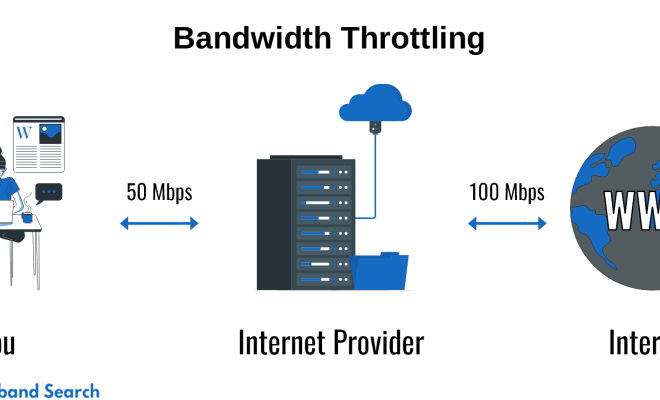What Is Bandwidth Throttling?

Bandwidth throttling is a term that refers to the intentional reduction of internet bandwidth by internet service providers (ISPs) during certain conditions. Bandwidth throttling occurs when a company decides to limit the amount of data allowed to pass through its network at any one time, usually to address network congestion or to restrict a user’s access to certain types of content.
The aim of bandwidth throttling is to control network traffic and prevent network slowdowns or outages. ISPs typically use bandwidth throttling to ensure that all customers have access to the same level of internet service, regardless of how much data they are using. This ensures that everyone can access important online services and prevent any one user from monopolizing bandwidth and slowing down the network.
ISPs typically use three types of bandwidth throttling techniques to control traffic flow. The first type of throttling technique is application-specific throttling, which involves lowering the speed of specific applications. These can include file-sharing programs, gaming applications, and video streaming services.
The second type of throttling technique is protocol-specific throttling. This involves limiting network traffic based on the type of protocol used to establish the connection. For example, ISPs may limit the amount of web traffic from HTTP or FTP connections while not limiting VoIP protocols like Skype or Zoom.
The third type of throttling technique is user-specific throttling, which is used to reduce the bandwidth allocated to heavy internet users. ISPs may choose to reduce the bandwidth of users who exceed a certain data limit or rely heavily on certain applications or types of streaming services.
Unfortunately, bandwidth throttling can have an adverse effect on users. It can lead to a significant slowdown of internet speed, which can make browsing, downloading, and streaming difficult and often frustrating. Some ISPs may even charge additional fees for users who require more bandwidth.
Fortunately, there are several ways to overcome bandwidth throttling. The simplest way is to use a Virtual Private Network (VPN). A VPN connects to a server outside of the ISP’s infrastructure, which allows access to the internet without any reductions in speed. However, using a VPN may lead to decreased internet speed or latency depending on the VPN quality or location of the server.
In conclusion, bandwidth throttling is an essential tool used by network administrators to manage the capacity of their networks. It is used to ensure that all users receive a reliable and equitable level of service. However, some ISPs can abuse throttling by reducing speeds too much or targeting specific types of traffic. Understanding and recognizing throttling practices and employing appropriate countermeasures such as using a VPN, can ensure that internet users can have unrestricted access to the internet while maintaining optimal performance.





